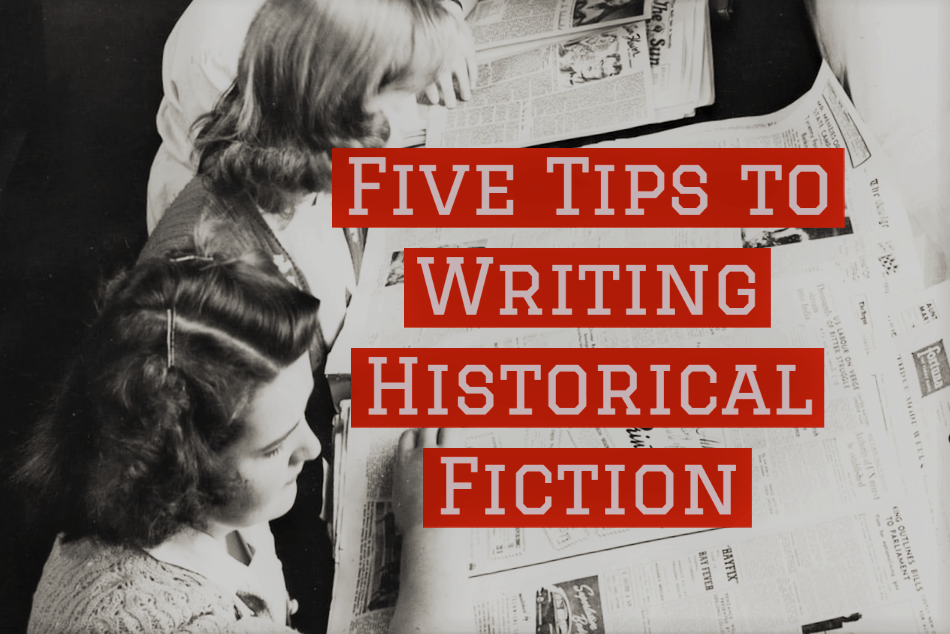by Liz Milliron
All my life, I’d written contemporary fiction. If you go back to those adolescent scribblings from junior high (please, just don’t, I beg you), they are all written “today”—as in the time I wrote them. The idea of writing something that happened in the past, even if the past was only ten years ago, never occurred to me.
Until it did.
My first historical novel, The Enemy We Don’t Know, was released in February. The story follows Betty Ahern, a young woman working at the Bell Airplane plant that was located near Buffalo, NY. Betty is a movie buff and her cinematic heroes are Sam Spade and Philip Marlowe. When sabotage is committed at Bell, and the co-worker accused hires Betty to clear her name, it’s her chance to become a real-life private detective. The character of Betty was inspired by my paternal grandmother. For more than a few reasons, I wanted to get every detail right.
Here are five lessons I learned on my literary journey.
- Don’t assume … because you know what happens when you do
Research is key no matter what you write, but it takes on an even greater importance when writing historical fiction. We all have mental images of various historical periods, be they World War Two (the famous Times Square kiss), the Roaring Twenties (flappers dancing the Charleston), or Victorian England (women in long frilly dresses with parasols having picnics with dashing young men in morning suits). In general, these visions have been informed by two sources: Hollywood (via TV or movies) and books.
Some of these portrayals are accurate. Some aren’t. Don’t believe me? Remember “Back to the Future” and Marty McFly rocking out to “Johnny B. Goode?” He’s playing a Gibson ES-345 guitar that wasn’t invented until 1958, three years after the year when most of the movie takes place. Or Forrest Gump receiving a letter thanking him for his investment in Apple in 1975 when the company didn’t go public until 1980.
“If you put the wrong underpants on Henry VIII, you’re in trouble.” -Margaret Atwood
Fortunately for writers, we have multiple resources at our fingertips. There are lots of educational websites that provide information. Among their many offerings, The New York Public Library Digital Collection and the Library of Congress Digital Collections; both have extensive archives of images available online. You can look at patriotic posters from World War One, study Thomas Jefferson’s papers, or see a map of Gettysburg from the Civil War. Most museums, such as the Heinz History Center have websiteswhich not only list pictures but sometimes even phone numbers that you can (gasp!) call. An impulsive decision to phone the Niagara Aerospace Museum provided me with a mountain of information, including book references and historical tidbits. For example, I learned that the women who built the P-39 often signed the parts as the plane was assembled and the museum was able to track down a woman who worked at Bell based on such a signature. This is gold for a novelist.
Also depending on the time period you’re writing about, you may be able to talk to people who lived it.
- Beware the anachronism
One of the worst things you can do as a historical writer is pull your reader out of the story. Including a reference to something that happened either way before or long after the time period you’re writing about is a surefire way to distance your now-skeptical reader from the text.
Don’t include zippers if they weren’t invented yet.
- Watch your language
No, I’m not talking about profanity. People communicated differently in the past. It’s more than word choice (although you don’t want to use words from another era—see #2 above). There’s a rhythm to speech that changes over time, from decade to decade. Speech patterns don’t stay the same.
If you’re writing about a relatively recent era, watching TV programs or movies or listening to radio programs can be helpful for writing about that time period. You can hear the cadence of how people talk. Good books set in your chosen the time period, or better yet, books written in that time period will help you fashion prose that fits the era.
- Beware a modern mindset
It’s fairly easy to have our characters do what we’d do in the same circumstances—or what we’d like to do, or what we think they should do. But you must consider the mindset of the times.
Few things are more jarring than reading about characters who act in a way that just would not happen in the time of the book. For example, in The Enemy We Don’t Know, Betty lives in a strict Irish-Catholic home and her mother in particular is sometimes very controlling. An early reader asked me, “Why doesn’t Betty move out? She has a job.” The answer: Because it wasn’t done. Young women of the 1940s lived at home until they were married, unless they moved to another city. And even there, they’d live in a “home for young ladies” where gentlemen callers wouldn’t be allowed past the front room. Hard to imagine in 2020, when unmarried young women get jobs out of college and move out of the family home.
You also have to be careful of inadvertent foreshadowing. Pearl Harbor or Armistice Day or the assassination of Abraham Lincoln are historical events. We, the modern readers, know they are going to happen and what the resulting consequences will be. Before those events, most people didn’t know they were coming.
- Don’t ignore the bad—but don’t go overboard
The past has pimples that cannot be ignored. Racial and gender inequality, religious intolerance have existed for a long time and may be far more prevalent in your chosen historical setting than they are now. You can’t ignore them if you write historical fiction, and certainly all your characters cannot be egalitarians (see #4, above). But these topics have to be treated with care and sensitivity so as not to alienate your present-day readers.
Extensive research (see #1, above) will help you be truly accurate in your depiction of the past without appearing to celebrate any of its unacceptable aspects.
What challenges have you faced when writing about another era? Share with us on Facebook.

 Liz Milliron is the author of The Laurel Highlands Mysteries. Her newest novel is The Enemy We Don’t Know, the first of the Home Front mystery series (“…an exciting crackerjack of a novel.” –James W. Ziskin, author of the Ellie Stone mysteries). Her short fiction has appeared in various magazines and anthologies. As M.E. Sutton, she writes the Hero’s Sword middle-grade fantasy series. She lives near Pittsburgh with her husband, two kids, and a retired-racing greyhound named Koda. Past president of the Pittsburgh chapter of Sisters in Crime and a member of Pennwriters, you can find her on Facebook or follow her on Instagram (@LizMilliron). Be sure to sign up for her newsletter!
Liz Milliron is the author of The Laurel Highlands Mysteries. Her newest novel is The Enemy We Don’t Know, the first of the Home Front mystery series (“…an exciting crackerjack of a novel.” –James W. Ziskin, author of the Ellie Stone mysteries). Her short fiction has appeared in various magazines and anthologies. As M.E. Sutton, she writes the Hero’s Sword middle-grade fantasy series. She lives near Pittsburgh with her husband, two kids, and a retired-racing greyhound named Koda. Past president of the Pittsburgh chapter of Sisters in Crime and a member of Pennwriters, you can find her on Facebook or follow her on Instagram (@LizMilliron). Be sure to sign up for her newsletter!





